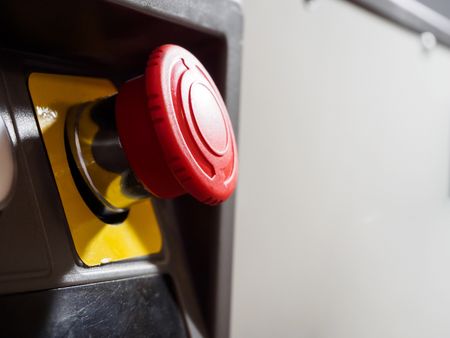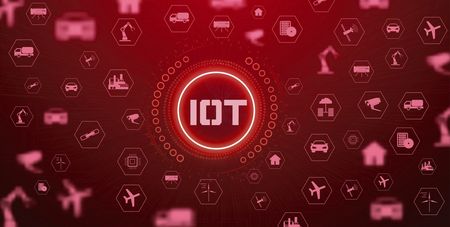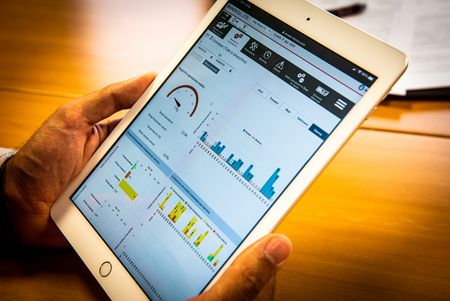Predictive maintenance: what it is, benefits and how to enable it
To understand the centrality of predictive maintenance in the industrial model 4.0 it is sufficient to report a percentage: 29.8%.
This represents the compound annual growth rate of predictive maintenance solutions until 2026, when it will be worth more than 18 billion dollars (source: fortune business insights).
This is undoubtedly an important, solid and continuous growth, an evidence to how much the industrial universe considers it one of the most significant manifestations of smart manufacturing.

Avoiding machine downtime: the most important requirement
For manufacturers, one of the most significant cost items is downtime, which in fact mainly occurs on two occasions: setup and breakdowns. In the first case, companies manage the phenomenon with a complex set of solutions: methodologies such as SMED (Single Minute Exchange of Die), machines equipped with automatic tool change and a perfect scheduling of production sequences on the Manufacturing Execution System (ESM). As for the faults, until the advent of the sensors integrated in the machinery, or more generally the Internet of Things, the only possibility was scheduled maintenance: there would still be a downtime, but much more manageable and less impactful than the totally unexpected one caused by a fault. Therefore, for this reason for a long time the maintenance was reactive (in the face of a sudden failure) or programmed.

The Internet of Things and the Concept of Connected Ecosystem
The advent of the Internet of Things and the 4.0 models has changed the game. Today, thanks to the convergence between IT and OT systems, the industrial shopfloor has become a connected ecosystem of machines, sensors, actuators and devices whose data flows into analysis platforms (in the cloud or at the edge of the network) that enhance them, that is, they transform the data into an information capable of directing the decision-making processes.
The fundamental concept, from which predictive maintenance originates, is precisely that of the connected ecosystem: the same MES, that is, the departmental system dedicated to the control and advancement of production, is integrated upstream with business systems (ERP) from which it receives work orders, and downstream with machine control systems, thus placing itself at the center of a system of exchange and valorisation of data that involves the whole company. With an MES duly connected to the machinery, it is possible to obtain not only high level indicators such as the OEE (Overall Equipment Effectiveness), but also specific productivity data of individual machines, teams, operators, how resources are used, where are the bottlenecks that affect lead times, production times and costs.

Artificial intelligence and predictive maintenance
The concept of predictive maintenance fits into this connected ecosystem. Compared to intervening following a failure or periodic programming that is not always necessary, such maintenance is defined predictive because it is programmed and performed in front of specific indicators that predict a potential failure in the near future or, however, within the time frame considered.
Two factors are needed to enable it: the above data, which comes from machine sensors (Industrial Internet of Things) and a platform of analysis that is able not only to give them a meaning and therefore to photograph the current situation of the plant, but to predict its future state. Mixing, for example, an abnormal vibration data with a certain type of overheating, the analysis platform (predictive) could predict a potential failure of the equipment, or even just an abnormal consumption, in the time frame concerned, alerting maintenance teams and also line and production managers for a reprogramming of the production cycle.
All this requires not only all that connected ecosystem mentioned above, but also the use of artificial intelligence algorithms, or rather Machine Learning: the analysis platform, in fact, is not simply programmed on the basis of standard rules, but it is gradually being educated by becoming more accurate and reliable in its predictions and alerts.
On a more technical level, there are two types of machine learning: supervised and not supervised. In the first case, we start from some basic rules, that is, from pairs of inputs and outputs, and we make sure that the system constantly processes large volumes of data in order to progressively improve its performance, that is, the reliability of the measurements. In the second case, unsupervised learning, no rules are provided and the system aims to independently extract knowledge and improve its performance from the databases provided and the correlations between them.
No matter what method is used, predictive maintenance offers a number of undoubted advantages in the manufacturing sector: first and most obvious is saving, clear consequence of a reduction in downtime; the productivity obviously increases, as a result of the greater operating continuity of the machinery; above all, the unforeseen events are reduced in a noticeable way, a real boon for those who have the responsibility of respecting time and costs.

Predictive maintenance: AMADA solutions
With its state-of-the-art machinery and advanced software platforms, AMADA effortlessly embraces the 4.0 industrial paradigm. The V-factory system, in particular, enables the remote control of machines: thanks to the acquisition and processing of data in real time, the platform carries out a real monitoring of the entire production process and allows the verification in real time through different devices (including mobile). Thanks to the direct connection with IoT sensors, AMADA can also provide remote assistance services including predictive maintenance, effective fault forecasting and timely maintenance planning.